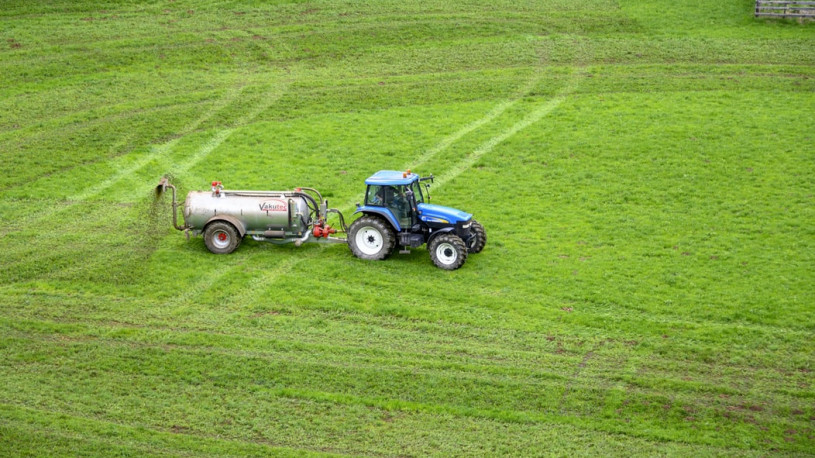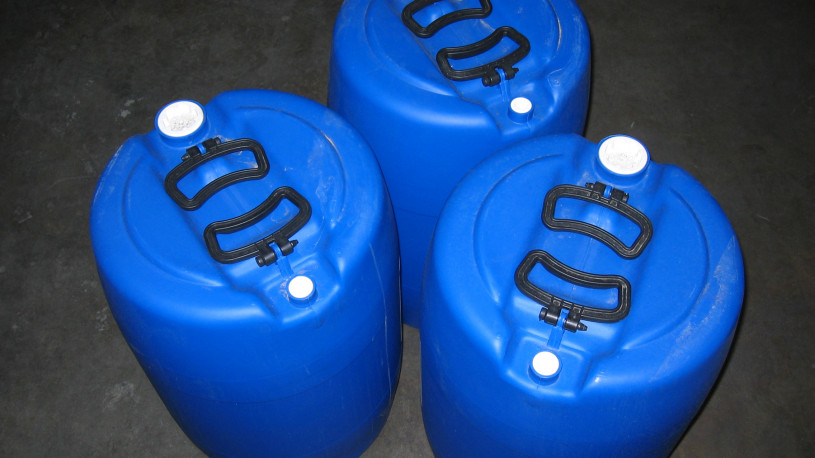-
What are the Hidden Costs of Industrial Agriculture?
 Continue Reading
Continue ReadingFollowing population growth and an increased demand for food, most of the world’s agriculture is based on industrial style practices. Modern farms are large, sometimes enormous enterprises, run with the intent to maximize profit. They often practice intensive land use, and require high uses of fertilisers (both nitrogen based and synthetic oil-based products), as well as pesticides, herbicides and other chemicals. This is seen as highly productive and successful practice, but are we missing some of the hidden costs of modern farming?
Does today’s agricultural industry place unnecessary burdens on our environment, our economy and our urban and rural communities? Do we need to rethink the way we feed ourselves?
Few would argue that modern farming does produce cheaper food than before. According to a recent article in the scientific journal ‘CA: A Cancer Journal for Clinicians’, Americans in the 1930s spent a quarter of their disposable income on food, whereas today most Americans spend less that 10% of their disposable dollars on food.
Today, agriculture is a highly specialised industry and a global operation that allows us to eat summer fruits all year round and lets us dine on exotic delicacies that our grandparents had never heard of, let alone eaten. And yet it is possible that much of the calculation of profitability and the low price of food has been based on short term vision. Increasingly, research is questioning whether modern practices are sustainable, and whether or not there are hidden, unintended consequences to the way we produce food.
Water Shortages
Whilst there is a healthy supply of produce for much of the world, in places the world is desperately short of water.
For example, whilst Japanese consumers enjoy Californian oranges, nearly all year long, the American state is suffering from the worst period of drought in living memory. Similarly, European diners eat tomatoes from Israel in the dark days of December, and yet the river Jordan is at a desperately low level, and the Dead Sea is in danger of drying up completely.
Energy Use
The industry is also responsible for huge amounts of energy use. The farming of lambs in New Zealand for export alone involves the transportation (and freezing or refrigeration) of US$1.7 billion worth of meat, primarily for Chinese and European consumption.
There is also the use of fossil fuels to run combine harvesters and other large farm machinery, as well as the production and transportation of pesticides and fertilisers. All of which has an impact on climate change, which in the long term could prove counter-productive to the agricultural industry.
Environmental Impact
The land itself can suffer from bad farming practice. For example, over-intensive use of farming land can produce more food for us, but may have negative repercussions on food production for our grandchildren. External pressures on farmers to compete force many to farm two crops each year (one summer and one winter), where before there would have been only one. This can raise revenues in the short term, but can exhaust the soil, increasing dependence on fertilisers.
The effects of industrial agriculture may also be felt far from the farm. For example, nitrogen compounds from farms in the Mid-West of America have been known to affect the waters in the Gulf of Mexico. This has created areas were most living creatures cannot survive, killing wildlife and destroying fishing based communities.
Likewise, a recent study, entitled ‘Uncovered’, by the Union of Concerned Scientists into Concentrated Animal Feeding Operations (CAFO) questioned the ‘hidden costs’ of intensive farming of livestock. It claimed that whilst there were short term benefits and efficiencies to be made in modern intensive farming, all too frequently, long term costs and impact on natural resources and habitats were not calculated.
Farmers and farming corporations can work out the costs of labour, new livestock, vets bills and feed, but can they put a figure on the damage to ecosystems caused by chemical fertilisers or animal waste that runs off fields into rivers and streams causing algal blooms?
Similarly, do arable farmers calculate the costs of the overuse of herbicides and insecticides that leads to pests building up a resistance?
Human Health Risks
In the same way that pests can develop immunity to chemicals, so can bacteria, and these can pose a health risk to agricultural workers, farmers and rural communities.
There are also doubts over the quality of food produce by intensive farming. A study by the American College of Nutrition, looked for 13 nutrients in 43 crops grown between 1950 to 1999 and discovered that, “the vegetables enjoyed by our grandparents were significantly more nutritious than the vegetables found on supermarket shelves today”.
Economic Costs
Ultimately, it all comes back to money. But then the problem is in estimating the total economic profit and loss of industrial agriculture is an almost impossible task. Much guess work would be needed to weigh the benefits of lower consumer price for food and the profits of agri-business giants, including fertilizer and pesticide manufacturers, against the health and environmental impact these activities cause.
To be able to truly understand and evaluate this impact, more research is required, as we do not always know what damage we are causing, for example with the use of endocrine disrupters in pesticides.
As the Union of Concerned Scientists notes, “Endocrine disrupters are molecules that appear to be able to mimic the actions of human and animal hormones and disturb important hormone-dependent activities like reproduction. More research is needed to determine the extent of the health and environmental damage done by such compounds.”
Can we calculate these costs?
Maybe it’s time for farmers, investors and governments to ask if there is too much short term thinking in the agricultural industry. An industry where systems are employed based on production for decades, not centuries.
Farmers and investors could profit in the long run, by employing more sustainable methods. Governments might save money by reducing subsidies that support intensive practices. This in turn might also reduce costs on reversing the negative impact of poor land management.
Similarly governments might save money on medical costs by having a healthier population through improved food quality and a reduction in the build up of chemicals in their citizens. Something that is ultimately priceless, for what price can you put on clean air, clean water and a healthy family?
-
Chinese House Prices and the PVC market
 Continue Reading
Continue ReadingThe cost of homes in China is falling! And it is falling at a sharper and sharper rate. Good news for those in Shanghai and Beijing hoping to join the property ladder, and bad news for Chinese property developers, but also those further afield too.
According to calculations made by Reuters (based on data from the National Bureau of Statistics in Beijing), “New home prices fell in 69 of 70 cities by an average of 5.1 percent from the year-ago period.”
This is a result of natural supply and demand, as real estate agents at Frank Knight LLP explain, “The developers have two to five years of stock to clear. So until that has been cleared, prices aren’t going up any time soon”.
This has already sent shock waves through the building industry in China, causing several major bankruptcies, including the firm Cement Shen, whose development ‘Peach Blossom Palace’ resulted in the companies collapse with debts of more than US$563m. There are now reports that Shenzhen-based Kaisa Group might also fold, owing in excess of US$10bn. Although with a sum that large, major moves are being made to restructure the debt.
When houses prices start to fall, it naturally slows down the number of new houses being built. This in turn, causes a reduction in demand for anything used in the building industry. And with a building industry as large as China’s, that affects global demand and global prices, especially for chemicals.
As Paul Hodges of ICIS states, “…chemical/plastic markets have (always) provided vital early warning of the problems ahead.”
Data from Global Trade Information Services shows that for the first time in 8 years, China is a net exporter of PVC. This is due in part to the fall in demand in the home market for many of the goods that are made with PVC, such as windows, cables and pipes.
As Hodges explains, “The property bubble caused net imports to soar to 1.5 million tonnes in 2009/10. Imports then began to be replaced by domestic production, (so that) by 2013, production had risen to reach 15MT, although new government policies meant demand was slowing. Last year production grew to 16MT – but only because exports nearly trebled from 400kt in 2013 to 1.1MT today.
Thus China has now become a net exporter of PVC. This is a major change from the previous position, where it had been the world’s largest importer.”
This has affected the balance of trade around the world, as China’s fall in demand and the increase in production has destroyed other regions export markets. For example, South East Asia is now a net importer of PVC, compared to the 240kt of exports it reported in 2009/10. Whilst in North America, despite its shale gas advantage, the export market has fallen to zero.
It is therefore wise that industry traders and manufacturers all take note of the price of property in Guangdong, not for reasons of relocation, but as a matter of business survival.
-
Chemspec Europe 2015 – An Opinion
 Continue Reading
Continue ReadingThis coming June 24th to 25th the great and good of the chemical industry in Europe will once again congregate for the international conference, and associated circus, that is Chemspec Europe, this year celebrating its 30th anniversary.
Not only is this a great time to look ahead at what advances chemistry will bring mankind over the coming twelve months, but it is also a time to do business, wheel deals, make new contacts and catch up will old friends.
But behind the stands and speeches, presentations and seminars, there lies a sadness that is rarely spoken of. A melancholy, that the once mighty European chemical industry is no longer the market leader it once was. It has been in decline for some 40 years, and with the explosion of development in the East and consistent 100 year growth in North America, is now a mid-ranking continent on the world stage.
Like a graceful old lady, the European chemical industry still maintains a sense of class and quality, but her slip is beginning to show. If she is to regain some of her dignity, then a fresh injection of energy (and with it money) is needed. Sure enough, Chemspec leads us to developments in future expanding markets, such as speciality chemicals, pharmaceuticals, personal care, household and farming products, but at present it is hard to say, whether the stagnant markets of Europe will light the way for ambitious captains of industry.
Sure enough plenty of profitable deals will be made over the long two days. For Chemspec remains a great occasion, and not one to be missed for any aspiring chemical salesman or executive worth his salary. But for this author at least, the event will be enjoyed less for its future and more for its nostalgia.
